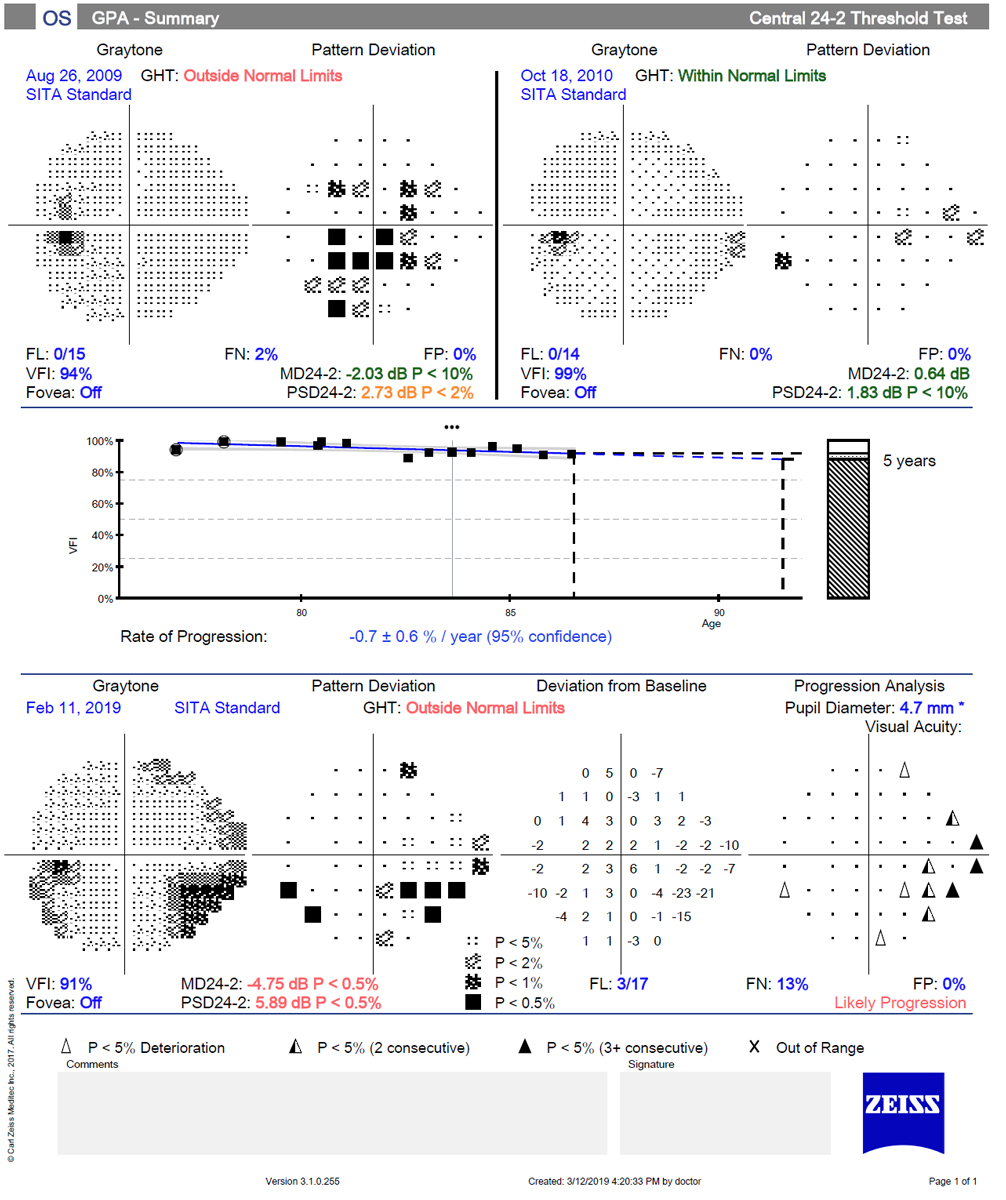 |
|
Despite its 60% shorter test time, SITA Faster fared no better than the standard perimetry test in accuracy as measured by false positive rates. Photo: Danica Marrelli, OD. Click image to enlarge. |
Recent research found that the Swedish Interactive Threshold Algorithm (SITA) Standard and SITA Faster strategies were associated with similar specificities among perimetry-naïve individuals. The study authors also reported that the SITA Faster approach did not increase the number of depressed points in the total and pattern deviation probability maps.
This randomized, comparative, observational case series included 74 perimetry-naïve healthy individuals. All participants underwent standard automated perimetry testing using the SITA Standard and SITA Faster strategies. One eye of each individual was tested, and test order between strategies was randomized. Between the tests, an interval of 15 minutes was allowed.
The researchers compared the following variables: test time, foveal threshold, false-positive errors, number of unreliable tests, mean deviation, visual field index, pattern standard deviation, glaucoma hemifield test and number of depressed points on the total and pattern deviation probability maps.
Data showed that SITA Faster tests were 60% shorter vs. SITA Standard. They were also associated with a significantly lower pattern standard deviation.
Between the two testing strategies, the researchers observed no significant differences in mean deviation, visual field index, foveal threshold, glaucoma hemifield test and number of points depressed at several P values on the total deviation and pattern deviation probability maps. Additionally, they reported a specificity of 68% with SITA Faster and 61% with SITA Standard.
“Our findings suggest that, when compared with SITA Standard, SITA Faster is associated with similar specificities and does not promote an increase in the overall number of depressed points in the total and pattern deviation probability maps,” the study authors stated in their paper for the Ophthalmology journal. They noted that it is important for eyecare providers to recognize that “both strategies are associated with disturbingly high false-positive rates in perimetry-naïve individuals.”
Costa VP, Zangalli CS, Jammal AA, et al. 24-2 SITA Standard versus 24-2 SITA Faster in perimetry-naïve normal subjects. Ophthalmology. August 17, 2022. [Epub ahead of print]. |


